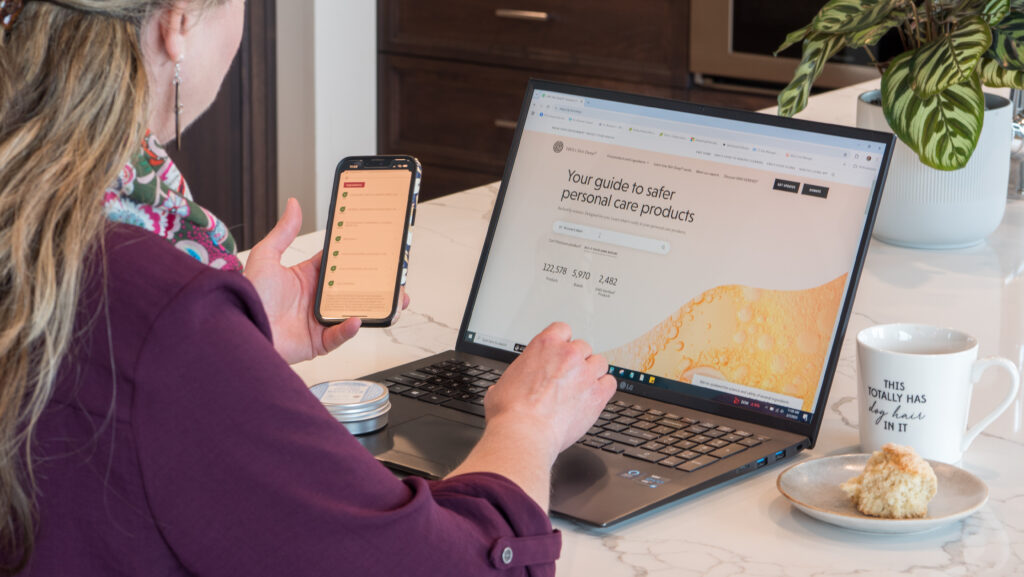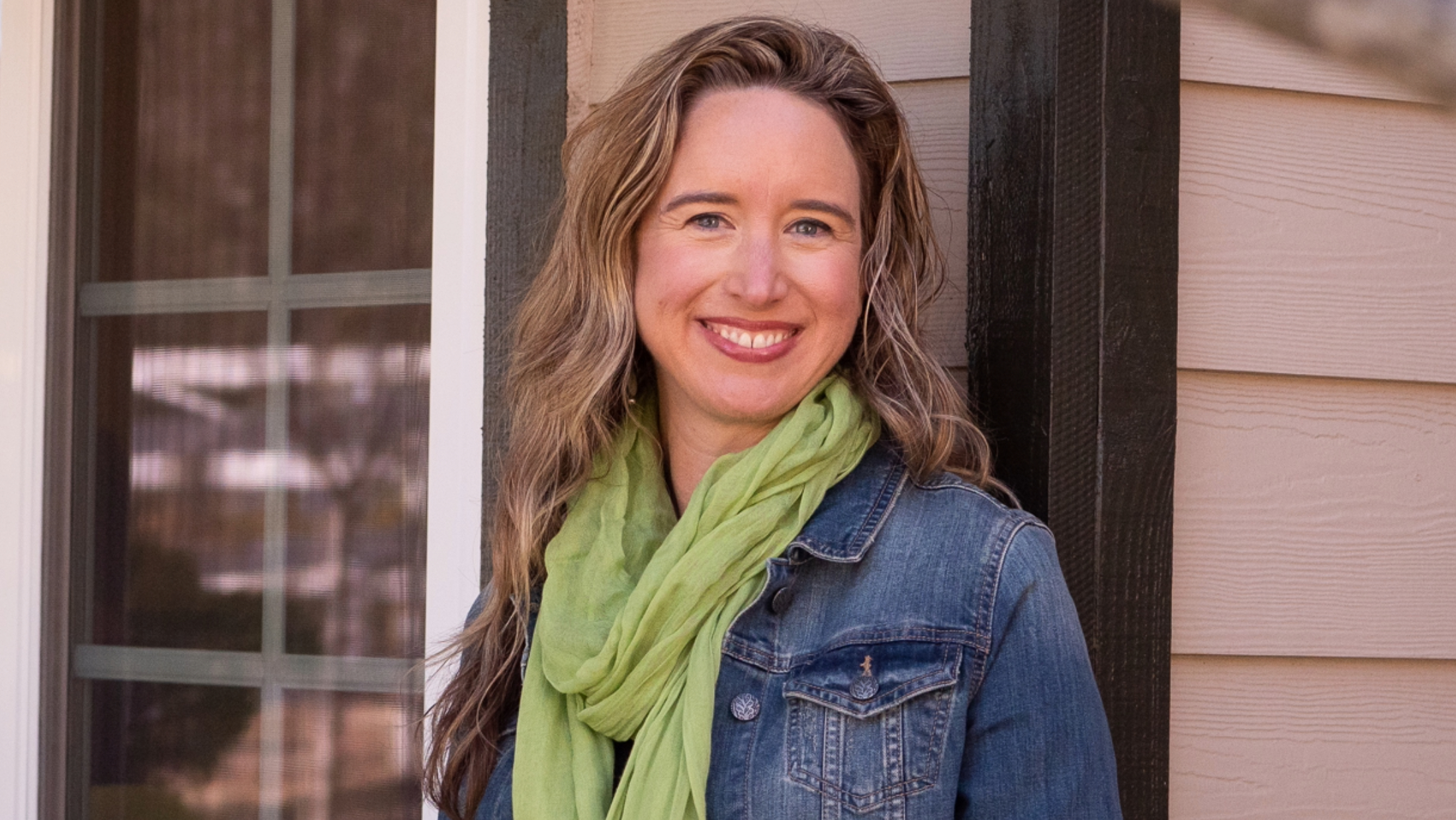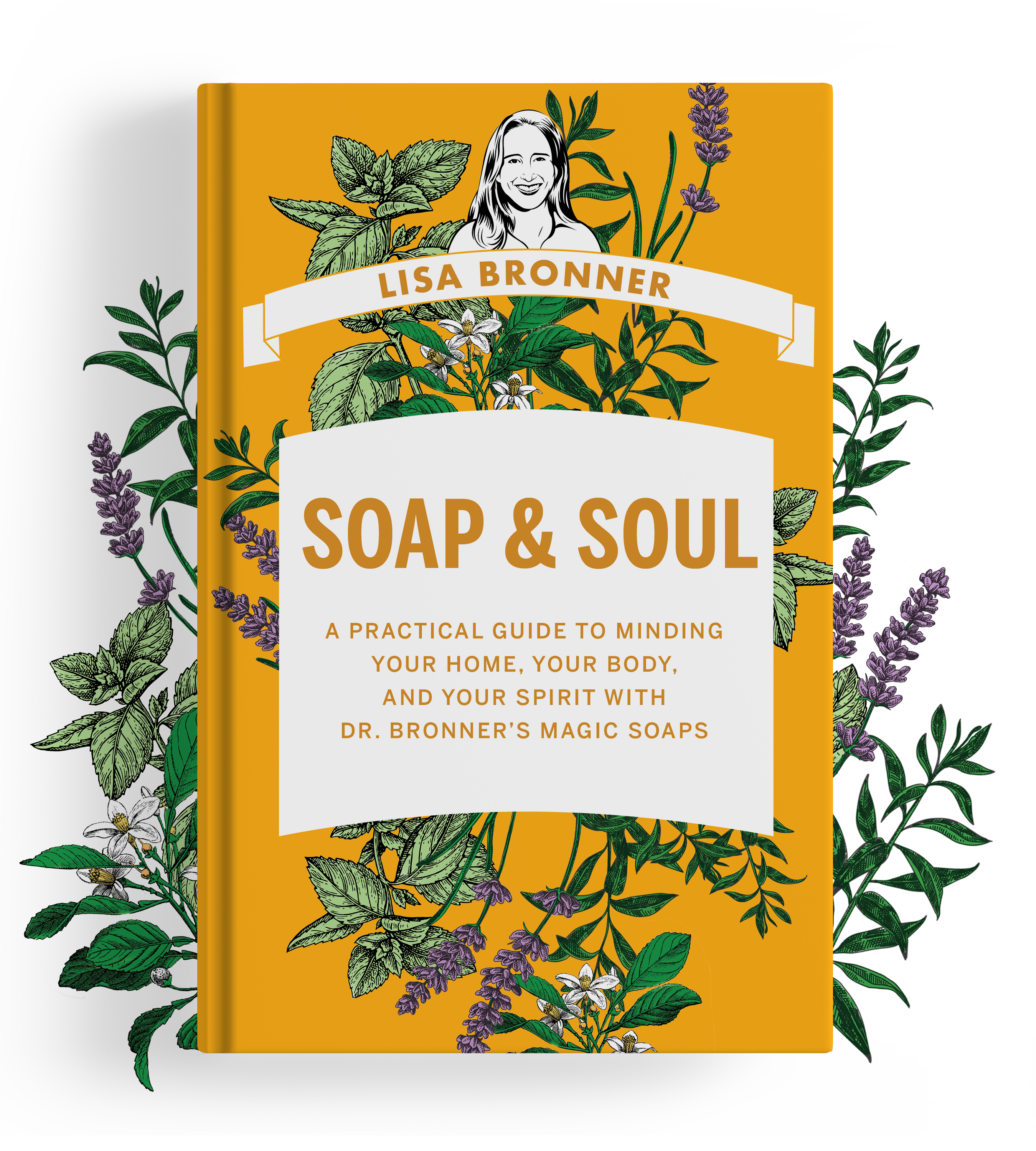
There are many things I am not great at (cooking neatly, managing time, hiding gifts), but one skill I have gotten pretty good at over the decades is asking questions and researching answers. This is partly because I enjoy the process immensely. It’s like a treasure hunt. I love finding out what I do not know.
When it comes to the whole realm of ingredient integrity—deciphering ingredients and interpreting labels and understanding moderate chemistry—I did not always know what I now know, and there is more than plenty I still don’t know. One place I often start my research when I have questions about a product is the Environmental Working Group (EWG).
I call this group the “Consumer Reports” of healthy living. They are an independent third-party research organization that keeps tabs on pretty much anything that might affect the health and wellbeing of an individual.
The EWG started its work by advocating for protective environmental measures in the farm bills of the early 1990s. With a stated mission, “To empower you with breakthrough research to make informed choices and live a healthy life in a healthy environment,” they have broadened their scope to address such topics as water quality, personal care products, food, cleaning products, and energy. There’s so much on their site that if you dive into it headfirst, you might not reemerge for days. So, let me give you a few starting places.
EWG’s Skin Deep Cosmetics Database for personal care products:
The Skin Deep® Cosmetics Database was where I first met EWG, though it was not their first work. I was quickly mesmerized by the ability to plug in the name of most products in my bathroom, and up would pop a tidy, color-coded little hazard rating, from 1 (good) to 10 (very bad) and then a breakdown of ingredients and concerns. For the safest products, look for those with an EWG Verified seal (more on that below) or green-colored low hazard score and high Data Availability score.
I must admit, that first day was addictive. I went through product after product in my cabinets and learned a whole lot about something I hadn’t previously given much thought to: the safety of my daily products.
The Skin Deep Database currently (April 2025) boasts nearly 130,000 personal care products in its catalogue from shampoos and soaps, to deodorants and sunscreens, makeup and lip balms, baby care, acne treatments and more. Although even this massive compilation isn’t exhaustive, it is still a great place to start investigating product and ingredient safety. If a particular product isn’t on there, you can look up its individual ingredients.
Not only does this database inform on the safety of products you may have, but it also helps you find better alternatives. The site’s focus is safety more than efficacy. It does not review product performance, but nonetheless, having insight into ingredient integrity is a huge step forward.
EWG’s Guide to Sunscreens:
The EWG stepped into a gap in oversight of sunscreen products in 2007 with its Guide to Sunscreens®. Sunscreen merits our greater scrutiny than many other personal care products for a few reasons. First, products that do a big job must rely on powerful ingredients—and blocking the rays of our neighborhood star is a big job. Some ingredients that effectively block the sun also bring with them a plethora of problematic side effects. Second, these are products to which we are highly exposed, since we wear them for long periods of time and apply them repeatedly. All this adds up to the need to pay careful attention to what is in them.
Since sunscreen manufacturers seem to change their formulations yearly, new brands pop into the market regularly, and there is such great variance in ingredient sets from one SPF to another and from one format to another (like a spray to a lotion) even within the same brand, there is a lot for one consumer to navigate. It used to take me hours every time I needed to make a sunscreen decision, so I appreciate the efficiency the EWG guide brings me. The Guide to Sunscreens uses the same color-coded hazard ratings as the Skin Deep database, and has EWG Verified options. To narrow your search, because there really are so many sunscreen options, the guide is separated into Recreational, Baby & Kid, and Daily sunscreens.
EWG’s Guide to Healthy Cleaning:
I was thrilled when the EWG added the Guide to Healthy Cleaning in 2012. This site mirrors the Skin Deep database, except instead of a numbering system, it uses a color-coded lettering system: A (good) to F (bad). The Guide to Healthy Cleaning ranks based on ingredient concerns and ingredient disclosure and reflect “the relative level of concern” from exposure to ingredients. This site is a great way to see if that “green” brand you’ve been buying is as healthful as you think. It’s a useful tool to breakdown complex ingredient names that stymie you. It is also valuable if a product doesn’t list its ingredients on its own labels or website.
Again, the Guide doesn’t abandon you amidst your products with poor ratings, but also helps you find good replacements.
Dirty Dozen/Clean Fifteen produce guides:
If you see me on my phone in the middle of the produce aisle, this is probably what I’m looking at. The Dirty Dozen™/Clean Fifteen™ is an annual list EWG releases as part of their Shopper’s Guide to Pesticides in Produce™. The Dirty Dozen are the 12 produce categories with the highest concentration of pesticide residues. The Clean Fifteen has the least.
These lists are helpful when you must decide where best to allocate extra grocery budget, or which option to choose when only conventional is available. It’s always best to prioritize organic, home grown, or farmer-known produce, and where you can’t know for sure how something was grown—such as when you’re in the produce aisle of the grocery store—prioritize organic options off the Dirty Dozen list, and be less concerned with products on the Clean Fifteen list.
A new standard: EWG Verified®
The EWG Verified® standard, which launched in 2015, compiles the organization’s research across their focus areas into one easy-to-recognize mark which can be displayed on-pack of products. The areas in which you can find the EWG Verified mark are personal care, cleaning products, baby products and diapers, mattresses, and pet grooming. While each area has standards unique to that category, they all include principles of full transparency around ingredients and materials and a reflection of the latest rigorous scientific research.
For example, to achieve the verification on personal care products, products must avoid all of EWG’s Ingredients of Concern and must fully disclose all ingredients. One component I was particularly glad to see is that the standard closes the fragrance loophole created by gap-ridden government regulation, wherein even amidst mandatory ingredient labeling laws, fragrance and flavor ingredients are excused as proprietary trade secrets. You’ll find the EWG Verified mark on many a Dr. Bronner’s product labels.
EWG covers more than this
There is much more in the scope of EWG’s work than I have mentioned here. There’s the Food Scores guide (like Skin Deep, but for food), the Healthy Living App for on-the-go info, the Tap Water Database, tons of articles for parents and caregivers, and more. I have given you starting places, my most-used resources, so you can continue your journey of researching and adopting safer products.
Where I go after EWG
As I’ve said, the EWG site is where I often start my research. From there, I may want to know even more about a particular ingredient, so I might dive into sites such as the Campaign for Safe Cosmetics or get another take on ingredients with the INCI Decoder site, or research sites such as PubMed Central or Wiley Online Library. If you’ll allow me to lean into my English teacher roots a bit, let me remind you that in research, it is always good to cross-check and gather info from multiple sources. Additionally, I have to bring my own situation to the evaluation. For example, allergens are one area which might earn a product a higher (more hazardous) rating, but if I know I don’t have that allergy, it’s not a factor for me.
Two considerations I leave you with: First, hours pass on this site in the blink of an eye, so be careful not to miss an important appointment or your needed sleep while you’re absorbing it all. Second, once you know something, you can’t un-know it. You might run across some disappointment as you research—I know I did when a much-loved product fell short in the ratings. But coping with this disappointment is part of our journey.
If your green journey has plateaued, this just might spur you to the next level. If you explore EWG, share in the comments what you learned or found helpful.



Since you first brought EWG, and a few other of these resources to light, it has changed my life. I do what I can to eliminate products from my home that do not meet EWG standards, and I want to say that it’s improved our entire households’ overall health and well being. Like you mentioned, it was a painful process, learning that most of the products that I was using had bad ratings and why they did have in them and may have been causing my health problems, skin problems, and asthma flare ups (i’m better now!), and trying to find alternatives to them. Although I know some of your products are not EWG Verified, I have swapped out household cleaning products, only using Dr. Bronner’s soaps, and GIY cleaners! Swapped out personal care with Dr. Bronner’s products as well. It’s been a rough and somewhat painful detox process, but it’s worth it.
Hi Jenn – I am so deeply glad to hear your journey. Good for you, persevering through all those learnings and changeovers. There certainly were some stubborn products for me, that took me some extra time to let go of. One step at a time! Sounds like you have taken a good many.
Hi Lisa!
I know a lot of people have suggested a Dr. Bronner’s Deodorant. Even I have asked about it, you said it was on the “maybe someday” list in an article on this blog. Most natural deodorant is expensive, so I decided to try making my own cheaper version that could help save money. It’s three ingredients: 1/4 cup olive oil, 5/8 cup baking soda, and essential oils for scent. It makes a salve that can be stored in a jar with an airtight lid. You can also add magnesium by dissolving magnesium flakes in water. But the recipe actually works very well, even my family loves it! You have to mix it often because the oil separates. I wanted to share this with you in case you wanted to try it!
Thanks!
Thanks for sharing this, Emerick!
Just be aware: many people will develop a bad reaction to baking soda over an extended time.
I’m looking for a healthy mattress.
Hi Phyllia- I’m sorry, I haven’t done any research on mattresses – but I certainly should! I searched “mattress” on the EWG.org website and found some articles there that may be helpful. Here’s the link to my search results: https://www.ewg.org/search?fullsearch=mattress
Very useful resource. It’s very helpful to girls as they love cosmetics. I would love to share your blog with my friends so that they get benefited from it. Keep posting such articles.
Hi Ajay – Glad to have helped! Thanks for sharing it.
EWG is a fantastic resource. I just finished a certification in Environmental Health from AZCIM and EWG is one of the many resources mentioned to help us maneuver the many chemicals we are exposed daily. I love the Dirty Dozen/Clean Fifteen! Great share Lisa and thank you again for all the great cleaning tips that help us and mother earth.